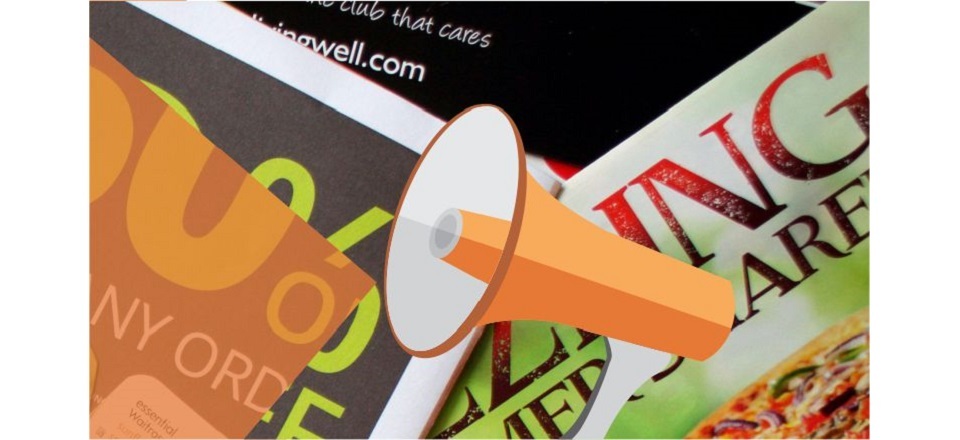ADVERTISING AND THE PANDEMIC
Written by Ina Georgala
The Coronavirus pandemic has impacted every part of our lives, dictating where we can go, how we spend our time – and even how we spend our money. In particular, the small business sector in the Overberg is bearing the brunt of government restrictions on regular trade as many businesses related to tourism, entertainment, retail and e-commerce had to shut up shop during the first two months of the pandemic.
As we start to emerge from the worst of the restrictions over the next six months, most entrepreneurs will have to make some tough business decisions in order to survive. Spending on advertising, marketing and ecommerce will understandably be very low on most SMMEs’ list of priorities.
However, this is not the time to go dark
Lessons learnt during the 2007/2008 economic recession showed that businesses who kept on advertising, were quicker to tap into the upswing that followed and showed a quicker return to pre-recession profit levels.
Globally, large companies and multinationals are applying the lessons learnt in 2008 to dictate how much and where they spend on marketing, advertising and e-commerce. Most of them are spending either at the same level or at a slightly reduced level than last year. However, marketing experts agree that the way in which such businesses spend their marketing budgets, has seen a marked change.
Where to spend it
One of the biggest changes is where businesses are spending their marketing budgets. As lockdown regulations kicked in around the world, consumer behaviour changed considerably. Sheltered at home, we all turned to online media for our entertainment and other needs.
To adjust to this behaviour, there was a surge in ad spending on Facebook, YouTube and Instagram by businesses. Facebook alone saw an increase in users of 11% year-on-year, and according to Statista 2020 now has a whopping 1.7 billion users. Video sharing app TikTok and video calling app WhatsApp also proved very popular, as did online entertainment services such as Netflix, AppleTV, Showmax and Spotify.
Astute entrepreneurs would do well to follow suit and explore some of these media to provide access to stay-at-home consumers.
Upping online presence
The pandemic has also sparked a trend for more personalised consumer communication. Consumers globally have shown that they are reluctant to return to busy public spaces like retail venues (i.e. shopping malls), entertainment venues and sports arenas once restrictions are lifted. This has made consumers more reliant on trustworthy, solid sources of information, services and goods than ever before.
Now is a good time to strengthen your online presence with your existing customer base, whether it is by distributing more regular online newsletters, improving your website and Facebook page with special offers that your customers are able to access from home or creating demonstration videos that can be posted on TikTok and other social media.
Hunting down advertising bargains
Pre-pandemic, many businesses did most of their marketing and advertising in the conventional media, such as newspapers, magazines, TV and radio. Understandably, these media sectors did not do well in the first months of the Coronavirus pandemic. In fact, Caxton closed its magazine division soon after Associated Media Publishing closed down its stable of magazines that included Cosmopolitan South Africa and House and Leisure. Closer to home, we saw the temporary closure of several regional radio stations and community newspapers and magazines. Ad spending on TV and radio advertising also dipped in the first quarter of 2020.
As unfortunate as this state of affairs is, it also provides an opportunity for businesses to explore some of these media once lockdown is phased out. Media houses will be very keen to attract new advertisers to top up advertising revenue. For the savvy entrepreneur, this could be a golden opportunity to access more potential customers through special advertising packages in a variety of traditional media. You might even be able to advertise in media you never considered before, such as TV or radio.
Keeping it real
Just as consumer behaviour was changed by lockdown regulations, post-pandemic conditions will also determine how we advertise products and services. Now is not the right time for the hard sell approach nor for scare tactics. However, it is the right time for authentic advertising that meets the needs of the consumer.
Messaging in adverts need to be sensitive to the uncertainties consumers will face post pandemic. Consumers will want to know if they can access a product or service safely. They will want to know that their money is well spent on a reliable product or service that delivers what it offers (quality over quantity). Finally, consumers want the reassurance that they have access to the goods and services offered by advertisers.
This means that advertisers will have to think carefully about how shipping and transport of goods and the shortage of some goods will impact the product or service they provide. Rather under-promise than disappoint customers! Advertisers will also have to communicate how they are ensuring the safety of their product or service in these uncertain times. That includes how they are keeping their employees safe.
Advertising with heart
If there is one thing that the Coronavirus epidemic has taught us, it is how inter-connected and dependent we are on each other. Advertisers should keep this in mind when advertising post-pandemic.
Join up with community projects like soup kitchens or support other local businesses through your advertising. This will not only be good for your brand profile, but your business will also be remembered as one that helped others during a difficult period in time. Remember, we are always #StrongerTogether.







.jpg?width=200&height=94)



























